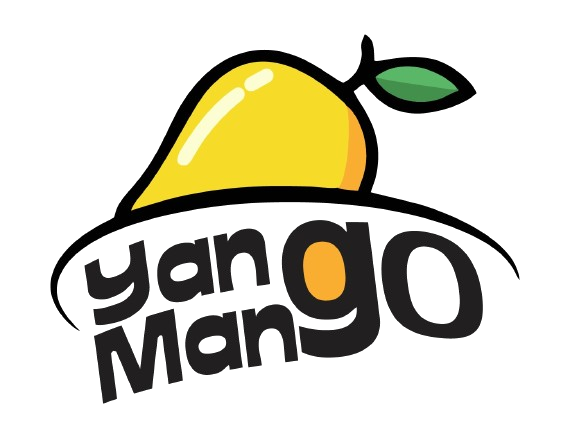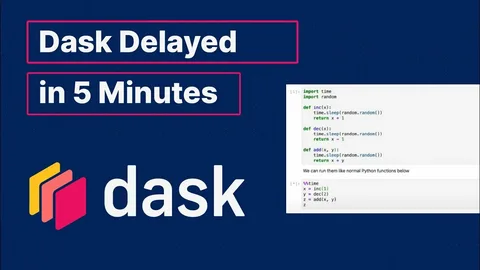The volume of data being generated today is staggering — from IoT sensors to social media platforms, it’s estimated that more than 300 zettabytes of data will exist globally within the next few years. For data scientists, this explosion of information brings both opportunity and challenge. While modern algorithms can handle complex analytics, they often struggle with scale. A single machine may not be enough to train large models or process massive datasets efficiently. That’s where distributed computing frameworks like Ray and Dask come into play.
Both tools allow computation to be spread across multiple cores or machines, significantly speeding up workloads that would otherwise take hours or even days. Yet, they approach the challenge in distinct ways, offering unique benefits for different use cases. Understanding how these frameworks work — and when to use them — is essential for anyone looking to push the limits of performance in machine learning, data analysis, or large-scale computation.
The Need for Distributed Computing
Traditional Python tools such as pandas and scikit-learn are incredibly effective but inherently limited by the resources of a single machine. As datasets grow into gigabytes or terabytes, they can quickly exceed memory capacity or processing limits. Distributed computing solves this by splitting tasks into smaller chunks and executing them in parallel across multiple CPUs, GPUs, or even entire clusters of machines.
This parallelisation enables significant efficiency improvements, allowing for the training of complex models, running of simulations, or processing of large-scale data. While early distributed systems like Hadoop were built for batch processing, frameworks like Ray and Dask have evolved to offer flexible, Python-native solutions suitable for the modern data science ecosystem.
Understanding Dask: Scaling Python Workflows Seamlessly
Dask was one of the earliest frameworks to bring distributed computing into the Python ecosystem without forcing users to abandon familiar tools. Its strength lies in how naturally it integrates with existing Python libraries. For instance, Dask DataFrame mimics the pandas API, allowing users to switch from pandas to Dask with minimal code changes when their data becomes too large for memory.
The framework divides large datasets into smaller partitions that can be processed in parallel, then automatically merges the results. Dask also supports distributed arrays, delayed computations, and machine learning integration through Dask-ML, enabling end-to-end workflows for data analysis and modelling.
A simple example illustrates Dask’s accessibility:
Import dask.dataframe as dd
# Load a large CSV file in parallel
df = dd.read_csv(‘big_data.csv’)
# Perform operations as you would in pandas
result = df.groupby(‘category’).sales.mean().compute()
The key advantage is scalability — this same code can run on a laptop or a distributed cluster with thousands of cores. Moreover, Dask’s dashboard provides real-time visualisation of task progress, which is especially valuable for diagnosing bottlenecks.
Learners pursuing a data scientist course in Bangalore often start with Dask as their first step into distributed computing because it offers a gentle learning curve while still being production-ready. It’s a bridge between local data analysis and large-scale computation, perfectly suited for those expanding their data-handling capacity.
Introducing Ray: The Next Generation of Distributed AI
While Dask excels at parallelising existing Python workloads, Ray takes a broader view, focusing on distributed applications rather than just data processing. Initially developed at UC Berkeley’s RISELab, Ray was designed for scalable AI — from model training and hyperparameter tuning to serving and reinforcement learning.
At its core, Ray provides a simple API for parallel and distributed execution. You can turn any Python function into a distributed task by adding a single decorator:
import ray
ray.init()
@ray.remote
def square(x):
return x * x
results = ray.get([square.remote(i) for i in range(10)])
print(results)
This ease of use hides a powerful architecture that manages distributed scheduling, resource allocation, and fault tolerance under the hood. Beyond basic parallelism, Ray offers a suite of higher-level libraries such as Ray Tune (for hyperparameter optimisation), Ray Serve (for model deployment), and Ray RLlib (for reinforcement learning). These make it particularly appealing for AI-driven workloads where coordination and scalability are critical.
In contrast to Dask’s task graph approach, Ray uses an actor-based model, enabling stateful computations across distributed systems. This makes it better suited for long-running processes or scenarios requiring dynamic task coordination — for example, training complex deep learning models across multiple GPUs.
Choosing Between Dask and Ray
Although both frameworks address the challenges of scaling computation, their design philosophies diverge significantly.
| Feature | Dask | Ray |
| Core Focus | Scalable data analytics and parallel computing | Distributed AI and model training |
| Integration | Works seamlessly with pandas, NumPy, and scikit-learn | Built for PyTorch, TensorFlow, and deep learning frameworks |
| Programming Model | Task graph for deterministic execution | Actor-based model for dynamic workloads |
| Ease of Use | Easier transition from standard Python workflows | Requires more setup but offers greater flexibility |
| Best Use Cases | ETL pipelines, large-scale data wrangling, classical ML | Distributed training, reinforcement learning, real-time inference |
Dask is ideal for data scientists dealing with large-scale data processing who want to extend familiar tools. Ray, on the other hand, is more powerful for advanced machine learning and AI applications that demand fine-grained control over distributed resources.
Professionals advancing through a data scientist course in Bangalore often experiment with both frameworks to understand where each excels. In doing so, they learn not only how to scale computations but also how to design distributed systems that handle the realities of production workloads.
Practical Use Cases and Integration
Dask excels in data-intensive workflows, including ETL pipelines, feature engineering, and analytics. It integrates easily with tools like Apache Arrow, Rapids, and even Spark, serving as a lightweight alternative for Python-centric teams.
Ray, meanwhile, powers some of the most advanced AI systems today. Companies use it for large-scale reinforcement learning, model serving, and distributed hyperparameter tuning. Its ability to scale from a laptop to a data centre makes it one of the most versatile frameworks available.
Interestingly, Dask and Ray can also be used together — Dask can handle data preprocessing while Ray manages training and deployment. This combination demonstrates the growing trend of hybrid architectures that blend data and AI workflows seamlessly.
Conclusion: Building Scalable Intelligence
As data grows and machine learning systems become more complex, the future of analytics lies in distributed computing. Both Ray and Dask empower data scientists to scale their ideas from a single notebook to thousands of machines, without sacrificing flexibility or control.
Dask offers the comfort of familiar APIs and efficient data scaling, while Ray delivers the infrastructure to build intelligent, distributed applications. Choosing between them isn’t a question of which is better, but which fits the problem at hand.
Ultimately, learning these frameworks enables data professionals to future-proof their skills in an era where computation must scale to match the speed of innovation. The journey begins not with bigger hardware, but with smarter architecture — and frameworks like Ray and Dask are leading that transformation.

